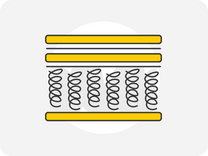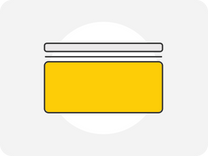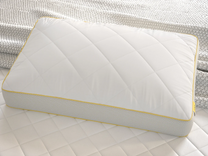Alright, brace yourself. This one’s a little gross — but very necessary.
You might think your bed is your safe haven, your cosy little retreat from the world. But under that soft, fluffy pillowcase? A secret world of sweat, drool, skin cells, oils, and possibly even dust mites is having a party. And you’re the VIP guest.
Let’s lift the pillowcase on what’s really going on, shall we?
so… what’s actually inside your pillow?
Pillows soak up everything. Over time, they collect:
- Sweat (especially in summer or if you’re a hot sleeper)
- Oil and product residue from your hair and skin
- Dead skin cells (yum)
- Drool (hey, it happens)
- Dust mites and allergens
And before you ask — yes, even if you wash your pillowcases regularly, these things still build up inside your pillow over time. The pillow itself can hold onto all that gunk unless you give it a proper clean from time to time and replace it entirely intermittently too.
how often should you wash or replace your pillow?
- Washing the pillowcase? Weekly at least.
- Washing the actual pillow? Every 3–6 months (check the label first—some are machine-washable, others require a more regular gentle spot clean).
- Replacing the pillow? Roughly every 1–2 years. If it’s yellowing, lumpy, or smells a bit off — the time has come to consider an upgrade.
We know, nobody wants to add “deep clean the pillow” to their to-do list. But trust us: your skin, sinuses, and sleep quality will all thank you for imparting upon this dreaded task.
how pillow hygiene affects your sleep
An old or dirty pillow doesn’t just feel gross — it can actually mess with your sleep.
- Allergies acting up at night? This could be being exacerbated by dust mites in your pillows.
- Waking up with a stuffy nose? Your pillow could be the culprit.
- Breaking out around your cheeks or jaw? Hello, bacteria build up.
Not to mention the lack of support as your pillow wears out. Flat, sad pillows can lead to neck pain, headaches, and restless nights.
pillow hygiene FAQs
Before you dash off to thoroughly clean or replace your pillow entirely, we’ve rounded up some common pillow hygiene faqs. Read on to learn more about pillow hygiene generally.
How do I know it’s time to replace my pillow?
Do the fold test! Fold it in half and if it doesn’t bounce back into shape, it’s past its prime. Also, if it’s yellow, flat, or smells like a mix of old laundry and regret… it’s definitely time to treat yourself to a lovely new one.
Can I wash all pillows?
Not always. Memory foam pillows usually need spot cleaning, while synthetic or feather pillows can often just be chucked in the washing machine. If in doubt, always double check the care label!.
What’s the best pillow material for hygiene?
Hypoallergenic pillows or ones with antimicrobial or removable, machine-washable covers (like ours) are great. Memory foam pillows are less prone to dust mites than feather pillows, but make sure you keep them clean and dry.
Do pillow protectors actually help?
Yes! They’re like a secret shield between your pillow and all the stuff your face leaves behind. Wash them with your bedding for extra freshness.
Should I get a new pillow if I get sick?
Not necessarily, but definitely wash your pillowcase (and maybe the pillow) once you get back to feeling yourself again. And if you’ve had the same one since before the pandemic… then yeah, maybe it’s time.
pillow hygiene: the bottom line
Your pillow could be doing more than just supporting your head — it could be quietly ruining your sleep (and your skin). A fresh, clean pillow = better zzzs, fewer allergy interruptions during the night, and less waking up looking like you’ve wrestled your bedding.
Need help finding a pillow that’s comfy and clean? We’ve got you. From memory foam to anti-allergy heroes, your perfect pillow match is ready and waiting. Until next time, eve Sleep.






